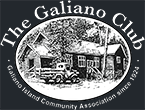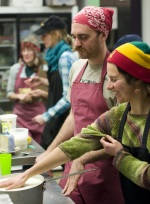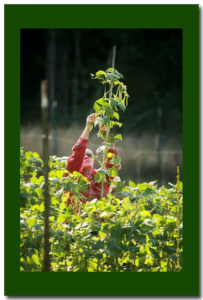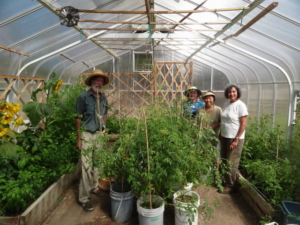 Before we all become ‘squirrel-cage-busy’ with the spring time explosion of activity down on the farm (by the time you read this it will, in all probability, be in full swing!) it’s best to reflect on last year….what happened, how it worked and then, where are we going this year?
Before we all become ‘squirrel-cage-busy’ with the spring time explosion of activity down on the farm (by the time you read this it will, in all probability, be in full swing!) it’s best to reflect on last year….what happened, how it worked and then, where are we going this year?
First of all, last year’s farm experience is best remembered through the June 2011 Active Page article (pg 38) written by Roger and Lisa Pettit. Do you remember last spring? Maybe it’s best not to! Just forget about the whole darn spring that wasn’t…!! Rain! Rain! Rain! Every farmer in the Fraser Valley was doing what farmers do best….belly-ache, whine, moan and complain about something no-one could do anything about! The weather….!!
Now, I think Roger got his potato crop in 5 weeks late, some farmers in the valley didn’t get planted at all, others were washed out or the fields were so soggy that everything rotted or couldn’t get harvested. Here at Cable Bay Farms the old Ford 8N blew a head gasket; we were scrambling to get fences repaired, trying to cultivate fields between rain squalls and someone very kindly pointed out that new potatoes from Oregon State could be bought at Safeway for $5.25 a pound! Jeez! Just doesn’t get any better than that eh! It was becoming very apparent that the bottom line contribution margin on any crop was going to be very slim pickings!
But, there was one very bright light in the Galiano Food Program’s activities last year, Janice Oakley and Alison Colwell became very efficient Field Crop Admirals. Now, before you think this inappropriate or faintly humorous…..who else but an Admiral could marshal field troops, actually get crops planted in the most difficult spring season for decades, keep morale up during lousy weather, maintain a consistent crew of harvesters twice a week, deal with a crop of rapidly deteriorating field squash…..and then to top it all off, produce the best damm apple-squash soup to feed hundreds at a community picnic! Now that’s admiral stuff eh!
And, may I remind you….at the end of season picnic, you ate locally produced potatoes, apple strudel, roasted squash, beets, pickled beans and raced modified Type A Zucchini when a lot of Fraser Valley producers couldn’t even harvest a crop. Me’thinks there was more than just one bright light in the Galiano Food Program last year eh?
So, where are we going this year? Actually, it’s going to be bigger, better, more efficient and more productive than ever on the farms of Galiano Island. New, highly efficient seeders, raised bed shapers and transplanters are on Galiano, new crop sharing arrangements have been formulated and although there is an abundance of optimism over this year’s potential…there is one disquieting thought? How will the GFP volunteers cope with such an abundance of harvested field crops? Some problem eh!
Okay, now down to the nitty-gritty of the 2012 Galiano Food Program’s Farm Experience. Here, in point form is how it’s going to work out…hopefully! Remember, good farmers utilize an emergent strategy style of operational excellence in adapting to changing circumstances, in the end after all, that’s how you got fed last year.
Get yourself on the ‘Admirals List’. See Janice or Alison for a 1 day/ month work day schedule (for 6 months) at either Sunshine Farm or Cable Bay Farms.
Be prepared to spend long, lazy days down on the farm. (Just kidding..!!)
Work that one (1) day a month down on the farm for the Galiano Food Program and you will receive:
A cultivated ready-to-plant food plot of 240 sq ft. (About 3’ by 80’) that will be irrigated once planted daily on your behalf. (Work on your food plot anytime you wish with your own seed, fertilizer and sweat equity, but please keep it legal and during daylight hours!)
A share of the field crops grown for the Galiano Food Program.
Training in the use of modern agriculture production equipment. (Think I’m kidding? Just wait till you see how 1000 seedlings are planted in 2 hours.)
Admiral Field Crews (AFC’s) will be organized for those who wish to volunteer on an ‘Ad Hoc’ basis throughout the summer. Galiano Food Program crops will be shared for AFC’s on an Activity Based Harvest system. (Simply put; You Work, You Eat! Easy eh!)
Cable Bay Farms will be accepting qualified participants for Tuesdays. We like to call it ‘Cable Bay Tuesday’.
Sunshine Farms will be accepting highly motivated individuals for both Thursday and Friday’s. After all, Sunshine Farms is a Saturday Market Field Crop Vendor.
So, it’s all pretty simple. The work planned down on the farm (watch for the GFP work parties; Cable Bay Tuesdays & for Sunshine Farms – the days will be Thursdays & Fridays) will be posted a week ahead on the wonderful community CALENDAR at www.activegaliano.org/calendar-galiano-island-events. So anyone interested can check out what’s happening directly, then call the Food Program at 250.539.2175 and get yourself on the ‘Admirals List’.
Oh, by the way? If this season’s crops are assisted with a helping hand from Mother Nature’so fickle weather way’s…. everyone will have almost more food than you can handle grown right here on our own Island!
Captain Thomas & Henny Schnare
 The Galiano Club Community Food Program and the Galiano Chamber of Commerce are offering Food Safe Level 1 on island. The course will take place June 10th at the South Community Hall. The class runs from 10am to 6pm. The cost of the course is $75, which includes the workbook and certificate upon completion.
The Galiano Club Community Food Program and the Galiano Chamber of Commerce are offering Food Safe Level 1 on island. The course will take place June 10th at the South Community Hall. The class runs from 10am to 6pm. The cost of the course is $75, which includes the workbook and certificate upon completion.
 Want to learn more about cheese? In the advanced course we will:
Want to learn more about cheese? In the advanced course we will: Join cheesemaker David Asher Rotsztain as we explore the fascinating realm of cheese. David will demonstrate and explain the techniques for making three basic styles of cheese: paneer, yogourt cheese and camembert, an aged rennet cheese. These lessons will provide a solid foundation for those interested in making cheese at home, or anyone who wants to know how their cheese is made.
Join cheesemaker David Asher Rotsztain as we explore the fascinating realm of cheese. David will demonstrate and explain the techniques for making three basic styles of cheese: paneer, yogourt cheese and camembert, an aged rennet cheese. These lessons will provide a solid foundation for those interested in making cheese at home, or anyone who wants to know how their cheese is made. Cable Bay Farm and Sunshine Farm are partnering up with the Food Program again this year to grow food for the community, the workers and the farms.
Cable Bay Farm and Sunshine Farm are partnering up with the Food Program again this year to grow food for the community, the workers and the farms. Before we all become ‘squirrel-cage-busy’ with the spring time explosion of activity down on the farm (by the time you read this it will, in all probability, be in full swing!) it’s best to reflect on last year….what happened, how it worked and then, where are we going this year?
Before we all become ‘squirrel-cage-busy’ with the spring time explosion of activity down on the farm (by the time you read this it will, in all probability, be in full swing!) it’s best to reflect on last year….what happened, how it worked and then, where are we going this year? The seed starting group got off to a solid start on March 4th with our first plantings of the season. Initial attendance went from 7 participants to a total of ten participants by the end of the month. At March’s first meeting, seed starting soil and soilless mixes, their components and purposes were discussed. The agreed upon recipe was made up in a large enough batch for everyone to plant their seeds. The initial planting included parsely, celery, fennel, onions of various types and leeks.
The seed starting group got off to a solid start on March 4th with our first plantings of the season. Initial attendance went from 7 participants to a total of ten participants by the end of the month. At March’s first meeting, seed starting soil and soilless mixes, their components and purposes were discussed. The agreed upon recipe was made up in a large enough batch for everyone to plant their seeds. The initial planting included parsely, celery, fennel, onions of various types and leeks.